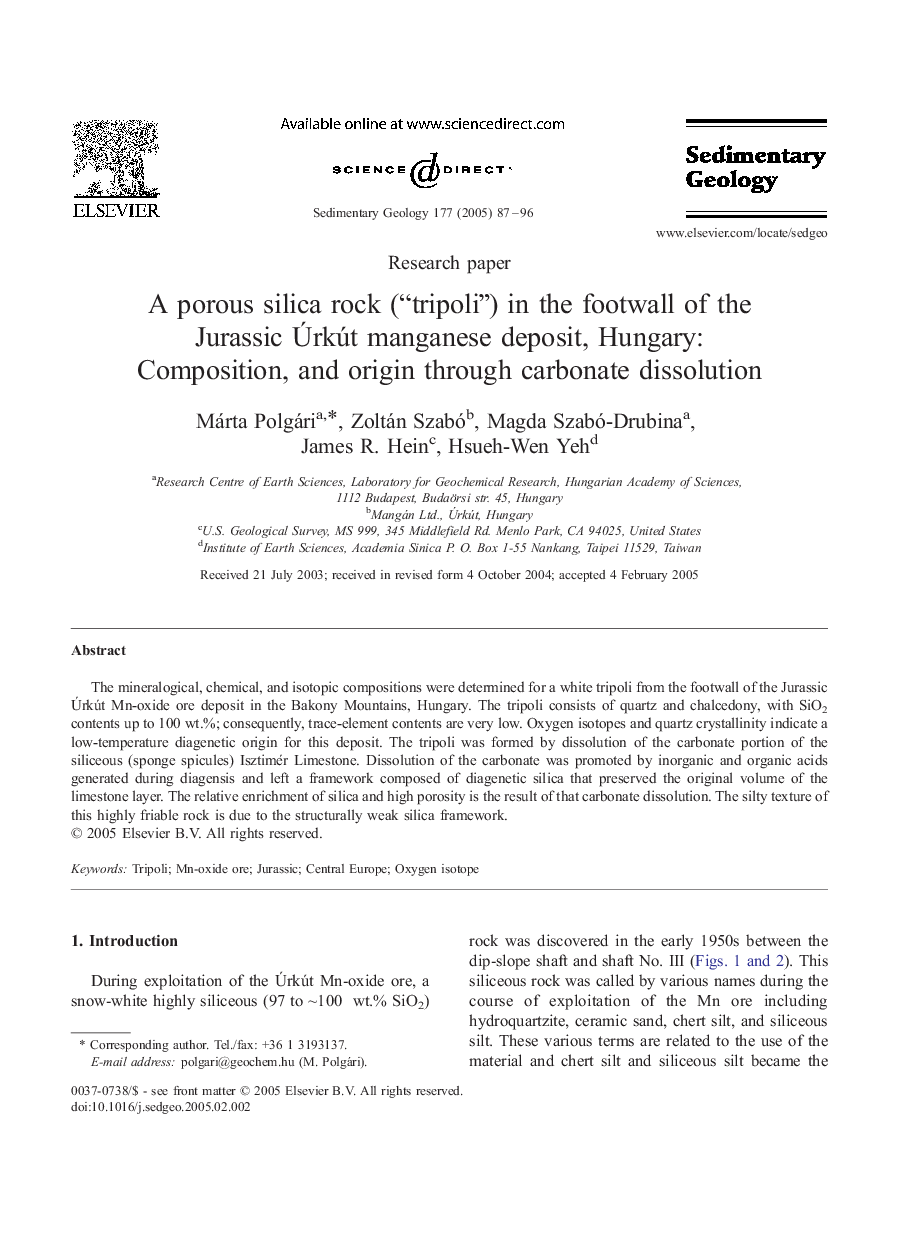| کد مقاله | کد نشریه | سال انتشار | مقاله انگلیسی | نسخه تمام متن |
|---|---|---|---|---|
| 9526151 | 1636205 | 2005 | 10 صفحه PDF | دانلود رایگان |
عنوان انگلیسی مقاله ISI
A porous silica rock (“tripoli”) in the footwall of the Jurassic Ãrkút manganese deposit, Hungary: Composition, and origin through carbonate dissolution
دانلود مقاله + سفارش ترجمه
دانلود مقاله ISI انگلیسی
رایگان برای ایرانیان
موضوعات مرتبط
مهندسی و علوم پایه
علوم زمین و سیارات
فرآیندهای سطح زمین
پیش نمایش صفحه اول مقاله

چکیده انگلیسی
The mineralogical, chemical, and isotopic compositions were determined for a white tripoli from the footwall of the Jurassic Ãrkút Mn-oxide ore deposit in the Bakony Mountains, Hungary. The tripoli consists of quartz and chalcedony, with SiO2 contents up to 100 wt.%; consequently, trace-element contents are very low. Oxygen isotopes and quartz crystallinity indicate a low-temperature diagenetic origin for this deposit. The tripoli was formed by dissolution of the carbonate portion of the siliceous (sponge spicules) Isztimér Limestone. Dissolution of the carbonate was promoted by inorganic and organic acids generated during diagensis and left a framework composed of diagenetic silica that preserved the original volume of the limestone layer. The relative enrichment of silica and high porosity is the result of that carbonate dissolution. The silty texture of this highly friable rock is due to the structurally weak silica framework.
ناشر
Database: Elsevier - ScienceDirect (ساینس دایرکت)
Journal: Sedimentary Geology - Volume 177, Issues 1â2, 1 June 2005, Pages 87-96
Journal: Sedimentary Geology - Volume 177, Issues 1â2, 1 June 2005, Pages 87-96
نویسندگان
Márta Polgári, Zoltán Szabó, Magda Szabó-Drubina, James R. Hein, Hsueh-Wen Yeh,